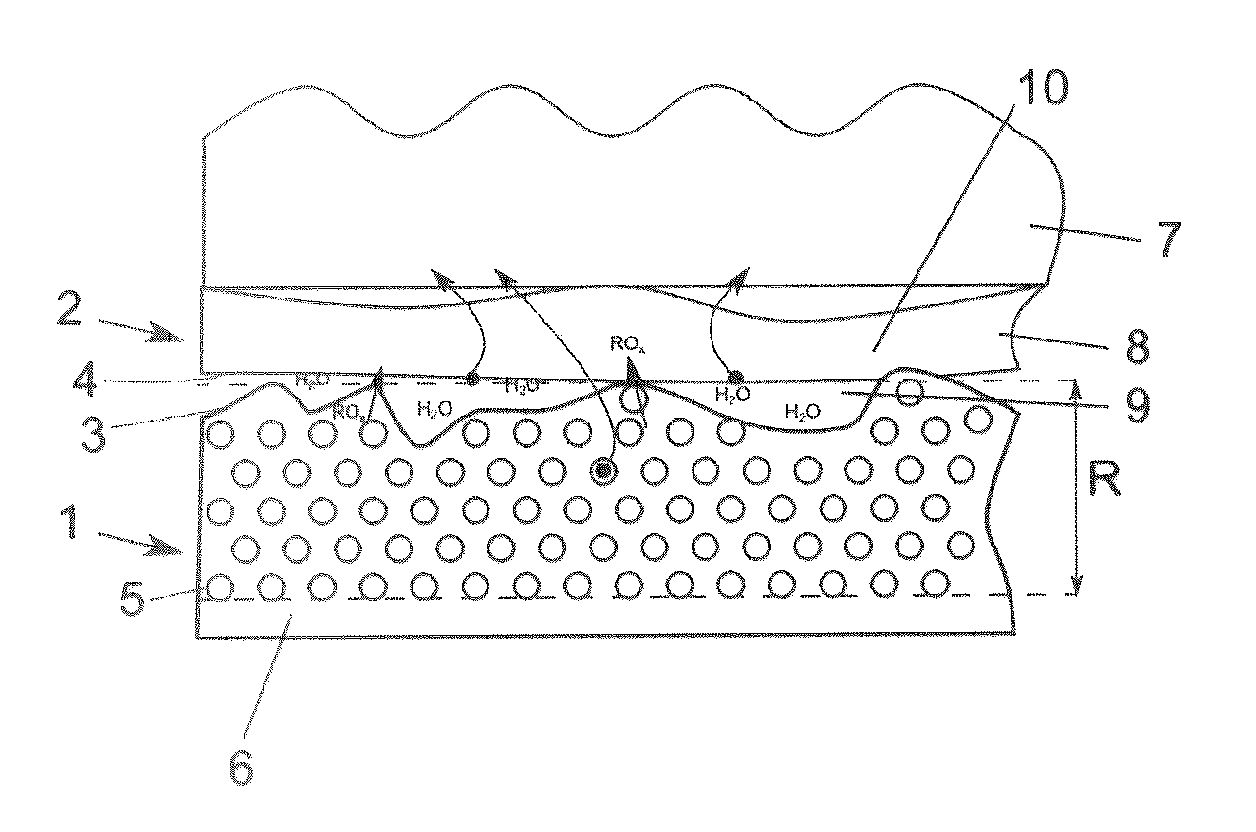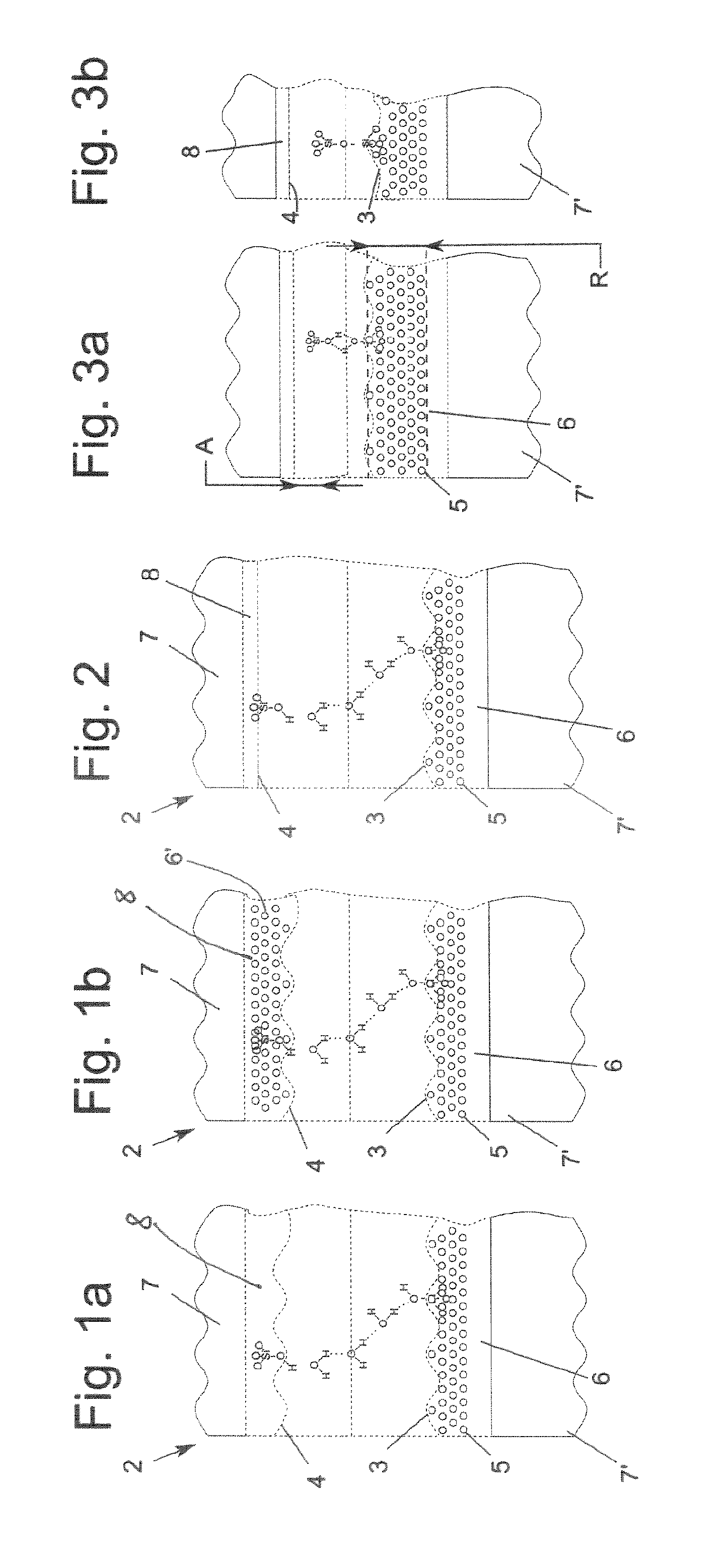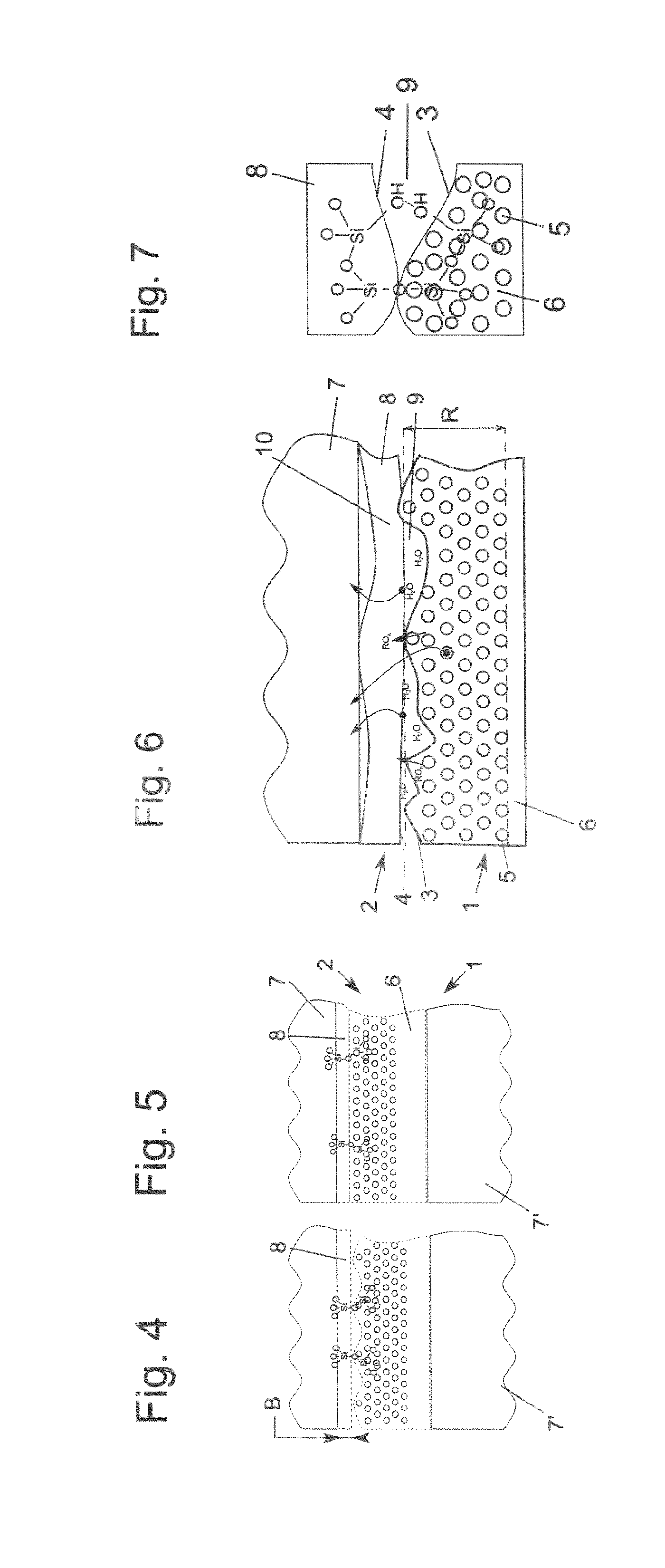Method for permanently bonding wafers
a technology of permanently bonding and wafers, applied in the direction of solid-state devices, basic electric elements, electric devices, etc., can solve the problems of high energy consumption, inability to reproduce or poorly reproduce, and hardly apply especially to altered conditions, so as to reduce the distance, reduce the dead space, and increase the bond strength between the two substrates
- Summary
- Abstract
- Description
- Claims
- Application Information
AI Technical Summary
Benefits of technology
Problems solved by technology
Method used
Image
Examples
Embodiment Construction
[0113]The same or equivalent features are identified with the same reference numbers in the figures.
[0114]In the situation shown in FIG. 1, only one extract of the chemical reactions which proceed during or immediately after the prebond step between a first contact surface 3 of a first substrate 1 and a second contact surface 4 of a second substrate 2 is shown [sic]. The surfaces are terminated with polar OH groups and are accordingly hydrophilic. The first substrate 1 and the second substrate 2 are held by the force of attraction of the hydrogen bridges between the OH groups present on the surface and the H2O molecules and also between the H2O molecules alone. The hydrophilicity of at least the first substrate 1 has been increased by plasma treatment in a preceding step.
[0115]It is especially advantageous to additionally subject the second substrate 2 or the second contact surface 4 to plasma treatment, especially at the same time with the plasma treatment of the first substrate 1 ...
PUM
 Login to View More
Login to View More Abstract
Description
Claims
Application Information
 Login to View More
Login to View More - R&D
- Intellectual Property
- Life Sciences
- Materials
- Tech Scout
- Unparalleled Data Quality
- Higher Quality Content
- 60% Fewer Hallucinations
Browse by: Latest US Patents, China's latest patents, Technical Efficacy Thesaurus, Application Domain, Technology Topic, Popular Technical Reports.
© 2025 PatSnap. All rights reserved.Legal|Privacy policy|Modern Slavery Act Transparency Statement|Sitemap|About US| Contact US: help@patsnap.com



